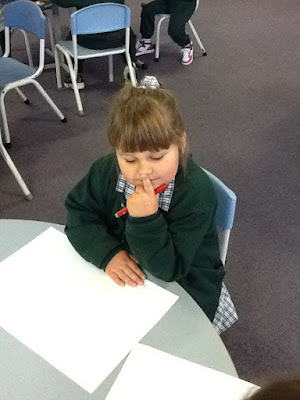Pre-Writing Considerations In The Writing Workshop
It is valuable to consider your own pre-writing strategies
when considering how best to support the pre-writing student writers might
enlist. In this way you can reflect upon how these various strategies assist
you in your writing process and this understanding to help less experienced
writer to refine their pre-writing approaches. It is all about thinking,
talking, shaping ideas and planning suitable action.
We should never underestimate the power of conversation and discussion in the pre-writing framework. Young writers should be mindfully encouraged to talk about, and play with their potential ideas, especially with peers. They should be encouraged to develop the habit of notetaking as they engage in such activities. That way they emerge from these interactions with tangible possibilities for their writing projects.
Let’s be clear though, pre-writing is not simply ‘brainstorming and it certainly isn’t the entire class using the same graphic organizer at the same time, in the same way.
Brainstorming is about generating as many ideas as possible without
making premature judgment as to the eventual worth of those ideas. It involves
quantity before considering the quality of those ideas and how they might be
applied. So brainstorming is a pre-writing strategy, but it involves two steps
–generation of ideas and organization of those same ideas.
A recent study of writing across Australia’s Primary School sector, ‘Writing Practices in Australian Primary Education, Years 1-6 ‘ conducted by Malpique, Valcan, Pasternak & Ledger and published in May 2022 revealed, among a raft of findings, 11% of teachers in Australian schools never use any form of pre-writing. This is an alarming statistic. It suggests the young writers in the care of these teachers are constantly undertaking what is often referred to as ‘cold start writing.’ The notion of - think, before ink is not impacting the classroom practice of these teachers. Student writers in these classrooms are not being mindfully set up to accomplish successful outcomes. An important opportunity to positively influence writing outcomes therefore, goes begging.
Alan j Wright








Comments
Post a Comment